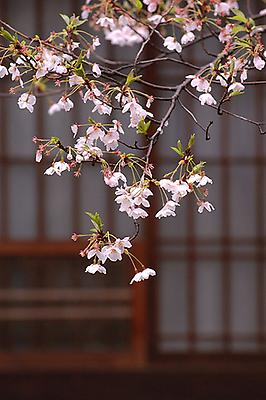Cherry blossoms – Sakura#
by Junichii Azuma, Professor at Kobe Gakuin University, Global Communication Faculty, 2015

Cherryblossoms near Aizu
Cherry blossoms, or sakura, isn’t just a symbol of spring.
In Japan, a school year begins in April, thus spring is the time of the year when people move on to a next stage of life. When students head to a new classroom with mixture of excitement and anxiety, sakura is there to cheer them on. For those students preparing for an entrance exam, the phrase “seeing sakura in coming April at the school they have successfully enrolled” is used as a slogan for passing the exam.
Even for grown-ups, sakura is something they look forward to, but in a different way. They gather with friends, bring over food/drinks, and hold a picnic, or hanami (literal translation: cherry blossom viewing) in Japanese, under the sakura. To help people get an idea of when to expect the full bloom, the meteorological observatory announces a forecast. Even though sakura is planted literally everywhere you look, it goes unnoticed for the most of the year. Then comes the spring, and they come into bloom all at once.
Sakura is at its best for only about a week, and then petals fall off. Petals dance in the air like snowflakes before hitting the ground. It is said that sakura’s short life teaches us a lesson that nothing stays the same forever. Others say that it is a symbol of transience of life.
